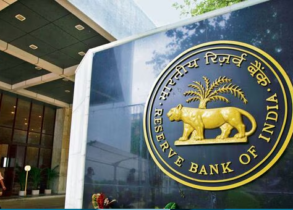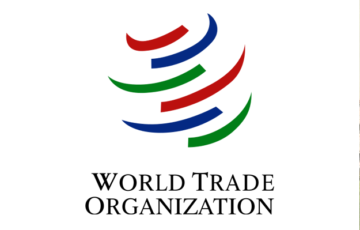FINANCIAL INSTITUTIONS IN INDIA
National Bank for Agriculture and Rural Development (NABARD)
- Overview: NABARD is a regulatory body for regional rural banks in India. It is an apex banking institution operating under the Ministry of Finance, headquartered in Mumbai. Its primary focus is on financing agriculture and rural development, including small-scale industries and cottage industries.
- Establishment: NABARD was established in July 1982 based on the recommendations of the B. Sivaraman committee, initiated by the RBI. It replaced the Agricultural Credit Department (ACD), Rural Planning and Credit Cell (RPCC), and Agricultural Refinance and Development Corporation (ARDC).
- Ownership: The central government and RBI jointly hold at least 51% of NABARD’s share capital.
- Responsibilities: NABARD is responsible for providing credit facilities to Micro, Small, and Medium Enterprises (MSMEs) and other industries.
- Functions of NABARD:
- Integrated Development: Provides investment and credit facilities for rural sector development activities.
- Funding: Offers funds for short-term loans to commercial banks, state cooperative banks, RRBs, and state land development banks.
- Monitoring: Monitors and evaluates projects it refinances.
- Financial Assistance: Provides financial assistance to the farm sector in various activities.
- Regulation: Regulates cooperative banks and RRBs, integrating them with Core Banking Solutions.
- Support to Self-Help Groups: Lends to SHGs, which primarily operate in rural India.
- Government Schemes: Assists in developing and implementing government schemes in rural areas.
- Training and Marketing: Provides training to handicraft artisans and marketing platforms for their products.
- International Affiliations: Collaborates with international organizations like the World Bank for rural development and financial assistance.
- Structure of Governance
- Board of Directors: Comprises the Chairperson, Directors from RBI, central government, state governments, Managing Director, and experts in various fields.
- Executive Committees: Consist of a prescribed number of directors and perform functions delegated by the Board of Directors.
- Contributions of NABARD to Rural Economy:
- Financial Contributions: Includes short-term and long-term loans, the Rural Infrastructure Development Fund (RIDF), Long-Term Irrigation Fund (LITF), and NABARD Infrastructure Development Assistance (NIDA).
- Developmental Contributions: Initiatives like the Kisan Credit Card scheme, RuPay Kisan Cards, Umbrella Programme on Natural Resource Management, SHG-Bank Linkage Programme, E-Shakti for digitizing SHGs, and marketing opportunities for rural artisans.
Small Industries Development Bank of India (SIDBI)
- Overview: SIDBI is a bank and regulator that issues licenses to MSME (Micro, Small, and Medium Enterprises) companies. It operates under the Ministry of Finance and is headquartered in Lucknow, with branches across India. SIDBI contributes to the development of MSMEs through credit provision, employment generation, export promotion, technology upgradation, and skill development.
- Establishment: Founded in 1989 through a parliamentary act to enhance credit flow and address developmental and financial gaps in MSMEs. SIDBI is one of the four Indian financial institutions regulated by the Reserve Bank of India (RBI), alongside EXIM Bank, NABARD, and NHB.
- Purposes of SIDBI:
- Credit Services: Principal provider of credit services to MSMEs.
- Refinance Facilities: Offers refinance facilities to banks and other financial institutions.
- Capital Support: Provides lending and working capital facilities to industries.
- Statutory Role: Plays a statutory role in financial markets through credit facilities, refinance, and long-term loans.
- Rural Entrepreneurship: Focuses on rural entrepreneurship development and promotion through microfinance institutions.
- Functions of SIDBI:
- Support to MSMEs: Addresses financial and non-financial demands of MSMEs to enhance competitiveness.
- Nodal Agency: Acts as a facilitator for various government ministries and implements schemes.
- Coordination: Collaborates with financial institutions like RRBs, cooperative banks, and industrial corporations to strengthen the financial ecosystem.
- Technology and Skill Development: Works on technology modernisation, skill upgradation, marketing support, and overall development.
- Sustainable Development: Focuses on the economy, social, and environmental sectors for sustainable growth of MSMEs.
- Indirect Lending: Provides funds to banks, NBFCs, Fin-techs, etc., to indirectly reach MSMEs.
- Direct Lending: Offers direct lending to fill credit gaps and support entrepreneurship culture through start-ups.
- Marketing Support: Provides marketing channels to aid the expansion of small-scale industries.
- Employment Promotion: Promotes job opportunities in semi-urban areas.
SIDBI Vision 2.0:
- Aims to transform from a financial institution to an integrated entity that provides credit facilities with development support for inclusive growth, focusing on sustainable development (Environment, People, Profit).
- Financial Contributions of SIDBI:
- Direct Finance: Offers working capital, long-term and short-term loans, venture capital funds, etc.
- Indirect Finance: Provides refinance to Primary Lending Institutions (PLIs) like NBFCs for easier credit flow.
- Microfinance: Supports small entrepreneurs and businesses with microfinance facilities for venture capital and start-ups.
- Schemes by SIDBI for Different Sectors:
- SMILE: SIDBI Make In India Loan for MSMEs with a range of ₹10 lakh to ₹25 lakhs.
- SEF: Smile Equipment Finance for entities with at least 3 years of operation and financial assistance of a minimum of ₹10 lakh.
- SPEED: SIDBI loan for equipment development of enterprise, requiring at least 3 years of operation and financial help of ₹1 crore.
- TULIP: Top-up loan for immediate proposals with a maximum of ₹2 crore for businesses expanding at the same location.
- STAR: SIDBI Long-term Assistance for Rooftop Solar PV plants, offering ₹10 lakh to ₹3.5 crores.
Export-Import Bank of India (EXIM Bank)
- Overview: EXIM Bank is a financial institution in India focused on integrating foreign trade and investment to support economic growth. It is headquartered in Mumbai and was established in 1982 by the Government of India (GOI) through an act of parliament.
- Regulation: While regulated by the Reserve Bank of India (RBI), EXIM Bank is owned by the GOI. It provides loans to companies engaged in exports from India and supports overseas buyers to facilitate foreign currency inflows.
- Aims of EXIM Bank:
- Promote Foreign Trade: Finance and enhance exports from India.
- Support Grassroots Initiatives: Provide financial support to initiatives and technologies with export potential at the grassroots level.
- Assist Small Businesses: Help small businesses, NGOs, and producer groups through export promotion.
- Board of Directors: Comprises a Chairman, Managing Director, two Deputy MDs, one Director appointed by RBI, one Director nominated by IDBI Bank Ltd., one Director nominated by ECGC Ltd., and up to 12 Directors nominated by the Central Government with experience in export/import or financing activities.
- Visions of EXIM Bank:
- Primary Financial Institution: Assist exporters and importers to enhance international trade.
- Expand Export Capabilities: Provide various products, services, and credits to empower business operations.
- Global Leadership: Help Indian companies match global standards through leadership and finance.
- Globalize Indian Businesses: Support companies in achieving their aspirations and expanding internationally.
- Functions of EXIM Bank:
- Credit Facility: Offer credit to Indian exporters and foreign buyers for importing goods from India.
- Market Expansion: Extend credit to exporters for expansion and entering international markets.
- Corporate Banking: Provide financing channels to support the export competitiveness of Indian companies.
- Overseas Investments: Offer loans and invest in Indian companies for overseas operations.
- Contract Acquisition: Assist Indian companies in securing contracts abroad.
- Trade Financing: Finance imports and exports of goods and services.
- Short-term Loans: Provide loans to foreign governments and banks.
- Advisory Services: Offer expertise and business advisory services for foreign projects.
- Financial Contributions of EXIM Bank:
- Buyer’s Credit: Enable foreign buyers to issue letters of credit to Indian exporters for deferred payment.
- Export Competitiveness: Offer financial options to enhance the competitiveness of domestic companies.
- Long-term Loans: Support exporters in financing projects, expansion, equipment purchases, R&D, and working capital.
- Equity Investments: Invest in overseas companies, ventures, and subsidiaries.
- Advisory Services: Provide advisory services to exporters for evaluating business opportunities and improving competitiveness.
National Housing Bank (NHB)
- Overview: NHB is a financial institution established in 1988 under the National Housing Bank Act of 1987. It is headquartered in New Delhi and aims to promote housing finance organizations at local and regional levels.
- Ownership: Initially funded by the Reserve Bank of India (RBI) with an initial share capital of ₹100 crore, NHB is now wholly owned by the Government of India (GOI) since 2019, following a purchase for ₹1450 crores. This move was based on recommendations from the Narasimha-II committee report in 2001.
- Objectives of NHB:
- Promote Housing Finance System: Aim for a profitable and sound system to meet the population’s demands.
- Serve Diverse Groups: Dedicatedly serve different groups and regions.
- Affordable Housing Credit: Make housing credit more affordable and accessible.
- Regulation and Supervision: Regulate and supervise activities related to housing finance companies (HFCs).
- Resource Allocation: Ensure the availability of resources for the housing sector and channel them to upgrade housing stock.
- Functions of NHB:
- Supervisory Role: Supervise HFCs and manage their registrations.
- Grievance Redressal: Address grievances of HFCs.
- Refinancing: Raise funds to refinance HFCs and lend loans to individuals, cooperative banks, and housing infrastructure companies.
- Capital Requirements: Ensure HFCs adhere to BASEL guidelines for capital requirements.
- Fund Raising: Raise funds through bonds, borrowings, debentures, etc.
- Statutory Liquidity: NHB bonds serve as security for commercial banks to meet statutory liquidity requirements.
- Resource Management: Arrange and utilize resources for housing finances.
- NHB Residex:
- Establishment: Launched in 2007 as the first housing price index by the GOI.
- Purpose: RESIDEX aids housing finance companies, banks, policymakers, builders, investors, etc., in analyzing housing prices across different Indian cities.
- Objective: NHB’s primary objective is to encourage housing finances in India and collaborate with overseas housing finance organizations to influence India’s housing finance landscape.
Export Credit Guarantee Corporation Ltd (ECGC)
- Overview: ECGC, established in July 1957, is a government-owned export credit provider headquartered in Mumbai. It operates under the Ministry of Commerce and Industry and is managed by a company with representatives from the GOI, RBI, banking, insurance, and export community.
- Purpose: ECGC aims to enhance exports by covering the risk of credit and providing export credit insurance services to support Indian exporters against non-payment risks by foreign buyers.
- Capital Infusion: In 2021-22, the Union government decided to infuse ₹4400 crore capital and propose its listing through an IPO to expand its reach and support industries.
- Functions of ECGC:
- Credit Risk Insurance: Provides insurance to exporters against the loss of goods and services.
- Financial Guarantees: Guarantees financial institutions to help exporters access better facilities.
- Overseas Investment Insurance: Offers insurance for Indian companies investing overseas, such as equity, loans, and advances.
- Export Guidance: Provides guidance on export-related activities and helps exporters secure easy export financing from financial institutions.
- Debt Recovery: Assists exporters in recovering bad debts.
- Buyer Creditworthiness: Offers information on the creditworthiness of foreign buyers.
- Competitiveness Enhancement: Improves the competitiveness of Indian exports through credit insurance.
- Export Credit Insurance Schemes: Issues various schemes to meet the requirements of banks offering export credit, including working capital financing and credit risk protection.
NIRVIK (Niryat Rin Vikas Yojana) Scheme
- Implementation: Under ECGC, NIRVIK aims to facilitate easy lending and loan availability to boost export-oriented services and provide insurance cover to protect exporters.
- Launch: Announced by the Finance Minister on February 1, 2020, during the Union Budget.
- Features:
- Supports both pre and post-shipment credits to protect exporters against risks.
- Offers coverage of up to 90% for small exporters.
- Different premium rate slabs for luxury items (gems, gold jewelry, diamonds, etc.) and other exporting items.
- Expanded inspection limit of records for losses incurred from ₹1 crore to ₹10 crore.
- Banks must pay a premium amount on a monthly basis along with interest.
- Benefits:
- Enhances loan access and availability for exporters.
- Makes Indian exports competitive in foreign markets and aids in reducing the trade imbalance.
- Simplifies procedures, making them more customer-friendly and time-efficient.
- Ensures timely availability of working capital.
- Insurance cover helps reduce the cost of credit.
MUDRA (Micro Units Development and Refinance Agency)
- Overview: Launched by the Indian government in 2015, MUDRA Bank provides low-rate loans to Microfinance Institutions (MFIs), Non-Banking Financial Companies (NBFCs), Small Finance Banks, and Commercial Banks.
- Purpose: To offer credit facilities to businesses in the non-farming sector, including manufacturing, processing, trade, and services, with a credit demand of less than ₹10 lakhs.
- Eligibility for Loans:
- Must be an Indian citizen.
- Engaged in non-farming sector businesses.
- Involved in income-generating activities with a credit demand of less than ₹10 lakhs.
- Objectives of MUDRA:
- Enhance economic growth.
- Refinance collateral-free loans to small borrowers.
- Support employment generation and increase GDP through micro-enterprise credit facilities.
- Monitor and regulate MFIs.
- Integrate the informal economy into the formal sector for increased tax benefits.
- Promote financial inclusion and credit delivery.
- Alleviate financial stress for borrowers.
- Types of Loans under MUDRA:
- Shishu: Loans up to ₹50,000.
- Kishor: Loans above ₹50,000 up to ₹5,00,000.
- Tarun: Loans above ₹5,00,000 up to ₹10,00,000.
- Need of the Hour for MUDRA:
- Critical Evaluation: Ensure careful evaluation before providing loans to prevent neglect of certain regions.
- Client Reach Expansion: Expand client reach to reduce the concentration of credit demand in one place and provide a wider base.
- Risk Recognition: Identify risks timely to regulate and overcome challenges.
- Repayment Monitoring: Banks should monitor client repayments and incentivize those who repay the loan amount before the deadline.
Financial Stability and Development Council (FSDC)
- Overview: The FSDC is a regulatory body established by the Government of India to handle financial regularities in the financial sector. It is a non-statutory apex body formed on the recommendation of a committee headed by Raghuram Rajan in 2010 under the Ministry of Finance.
- Purpose: The FSDC aims to prevent global economic meltdowns and strengthen financial stability, development, regulation, and monitoring of the economy. It also focuses on financial literacy, inclusion, and macro-prudential oversight, including the operation of large financial conglomerates.
- Board of Directors:
- Chairperson: The Union Finance Minister.
- Members: Include the heads of all financial sector regulators such as the Governor of RBI, SEBI, PFRDA, IRDA, the Finance Secretary, the Secretary of the Department of Economic Affairs, the Secretary of the Department of Financial Services (DFS), and the Chief Economic Advisor.
- 2018 Reforms: Added members include the Minister of State responsible for the Department of Economic Affairs, the Secretary of the Department of Electronics and Information Technology, the Chairperson of the Insolvency and Bankruptcy Board of India (IBBI), and the Revenue Secretary.
- Meetings: The Chairperson may invite any person whose presence is necessary for the meetings.
- Functions of FSDC
- Financial Stability: Works towards the improvement of financial stability.
- Inspection: Critically inspects the operations of financial companies.
- Economic Vigilance: Evaluates the performance of financial companies and monitors the economy.
- Financial Stability Report: Released by RBI every two years to update on financial stability and resilience.
- Way Forward for FSDC:
- Liquidity and Capital Support: Provide liquidity and support through capital availability to stabilize financial institutions for the long term.
- Fiscal Support and Regulation: Offer fiscal support, regulation, and liquidity provisions to aid economic recovery.
- Policy Measures: Government to identify policy measures, private investment tools, and sector-specific programs to protect against economic slowdown and threats of insolvency.
UPSC PREVIOUS YEAR QUESTION
1. Consider, the following statements: (2023)
Statement-I: India accounts for 3.2% of global export of goods.
Statement-II: Many local companies and some foreign companies operating in India have taken advantage of India’s ‘Production-linked Incentive’ scheme.
Which one of the following is correct in respect of the above statements?
(a) Both Statement-I and Statement-II are correct and Statement-II is the correct explanation for Statement-I










